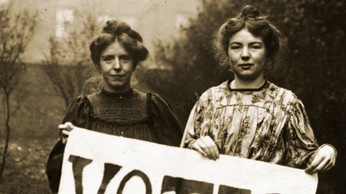
The burnout crisis is a workload crisis
Hire more, ask for less. That’s where we need to start.
Here’s a non-exhaustive list of things companies have done to fight the burnout epidemic: Expand mental health benefits. No-meeting Fridays. Shut down for a week. Train employees in meditation. No-meeting Wednesdays. Organise listening sessions and internal surveys. No-meeting Thanksgiving week. Set up nap rooms. Pay people extra to take their annual leave. Open a whole freaking wellness centre.
Here’s what companies haven’t done: Expand headcount without expanding projects. Set less ambitious growth targets. Accept lower profit margins.
Fighting burnout is far less palatable to corporations and their fiduciaries when you ask them to attack its root cause – unmanageable workloads.
A joint systematic analysis by the World Health Organization and International Labour Organization published last year – precious because it is truly global in scope – found that nearly half a billion people were exposed to overwork (more than 55 hours a week) and three-quarters of a million died from it in 2016, through coronary heart disease and strokes brought on by stress and unhealthy coping mechanisms (alcohol, poor eating, reduced sleep and exercise, etc.) Overwork kills more than malaria and about as much as suicide.
Burnout is a feature, not a bug, of the knowledge economy
Preamble: I’m about to sound like a dangerous radical, but since my last essay on corporate life saw me labeled a traitor to the working class, I figure on balance I remain a centrist. And while I write here about what I know – white-collar burnout in Europe and the US – I must note that the burden of overwork-related death and disability is highest in low- and middle-income countries.
In knowledge economy corporations mostly made up of butts in seats in front of laptops, people are the largest expense. Minds are the raw material. It’s extractive capitalism and we are the oil field. I’m not being facetious; amazing things have been created this way. But once such a company has open-planned and hot-desked its real estate to a minimum, made its data centres energy-efficient and imposed draconian deals on its few suppliers, the only thing left to squeeze to keep operating margins at the level shareholders have come to expect – 40% at Meta, 31% at Alphabet, 41% at Microsoft, 21% at Netflix… – is people.
Companies working their staff to exhaustion are simply optimising their cost structure. They’re not going to hire extra people until they know the current workforce is optimally employed. In their defense, that’s really hard to determine. When work is increasingly flexible, when is a meeting taken from home after dinner an unacceptable employer overreach and when is it a welcome adaptation to family life? We’re also just now understanding how little creative work our brains are capable of in a day and how much inactivity went unnoticed in the old 8-hour office or factory day. And in a culture that worships ambition, the only hint executives often get is when workers start tapping out en masse. Attrition rates are a fire alarm that goes off far too late.
It would stand to reason that companies keep their employees healthy for the long run and spare themselves the expense of rehiring and onboarding. But with median tenure in a job around four years in the US and five in the UK – less in in-demand industries – there’s little incentive to preserve employees' health for their next gig. Let them take unpaid sabbaticals between employers. Besides, when has capitalism ever been good at prioritising long-term sustainability over short-term profitability?
Burnout is not just a workload issue. But it is a workload issue.
Mental health professionals tell us again and again: “Burnout is not just a workload issue.” It’s true. (The widely referenced Maslach Burnout Inventory identifies six factors: workload, control, reward, community, fairness and values.) But it seems many companies heard: “You don’t need to worry about workload at all.”
Burnout results from “chronic workplace stress that has not been successfully managed.” That’s the World Health Organization definition. It shows up as:
- exhaustion;
- increased mental distance from your job, or feeling negative or cynical about it; and
- reduced professional efficacy.
It’s about being overworked and not feeling in control and struggling to find meaning in it. You know what doesn’t help with that? Working till 2 am. Having your plate so full that you’re always reacting to events instead of setting the agenda for your day. Being offered unlimited time off then never being able to take any because you don’t want to offload on your exhausted colleagues. Finding your workload creep up and up as every idea you suggest gets enthusiastically approved – without headcount attached. And then being lectured by some wellness guru: “Work smarter, not harder.”
Self-help solutions focused on the suffering individual can provide short-term relief, but they displace responsibility for what is fundamentally a systemic issue. You can’t hire a bunch of Type A professionals, set impossible targets for them, compensate them on results, then tell them it’s on them to speak up when it’s too much. It’s especially pernicious since we know burnout can destroy an individual’s ambition, self-worth and sense of agency.
Burnout lies to you. It tells you you’re incompetent. It tells you you don’t deserve to burn out. It tells you your inability to cope is a personal failure. Everyone else is fine, aren’t they? Then HR comes in with a self-care programme and it tells you the same thing: The problem is you.
The problem is not you. Competent people burn out. Great managers burn out. People even burn out in friendly companies with exceptional bosses and rewarding work. Just ask me.
The pandemic has of course only made it worse and surfaced what was long simmering. In a 30-country workforce survey in 2021, Microsoft found that 54% of respondents felt overworked and 39% plain exhausted. It's not just an impression. Looking at big data from their enterprise software, Microsoft noticed that meeting hours had more than doubled since February 2020, 40 billion more emails were sent, and the average user sent 45% more Teams instant messages. But everyone still replies in under 5 minutes. Meanwhile, demand for an ever more empathetic management style is burning out team leaders and HR professionals. And while some resign in record numbers, those left behind are at even greater risk.
We must and can afford to do something about this
Burnout kills. It also changes the brain. It reduces cognitive capacity, impairs social function and alters memory. It was only in researching this essay that I understood why my brain felt so alien for so long. The recovery I thought would take a couple months really took two years, and I beat myself over it endlessly. That was the burnt out brain lying to me too. The way we are working right now is depleting our collective human potential just as it is depleting our planet.
We're going to have to address this as a global culture and economy. We can afford it. Such radical anti-business publications as Bloomberg and The Wall Street Journal pointed out that for all the complaints about the rising cost of labour and materials, business is doing incredibly well. US corporations recently racked up their fattest profits since the 1950s. Arcelor Mittal, just for example, made more money in 2021 than in the past 13 years combined, while tech giants net earnings (not revenue) higher than most countries' GDP. Even in more staid Europe, average corporate profit margins will reach in 2022 their pre-2008 levels. And while labour's share of value added by the US economy is slowly creeping up, it is nowhere near the levels at any point between World War II and my high school graduation. (2003, if you must know.) It's hard to overstate how well business is doing right now. But promises to embrace a fairer kind of capitalism remain empty.
Corporations will have to do their part and that means putting real money behind supporting workers. Our search for solutions must go much deeper than it has so far. You know what I’ve never heard a burnt-out person say? “If only my boss would buy me a Headspace subscription.”
With thanks to Tanmoy Goswami, whose tweeting on the subject inspired some of this; to him and Katie Carroll for beta-reading; to Hannah Storm and John Crowley who years ago brought me along for a vital conversation about burnout and mental health in the news industry and are now pursuing this work with Headlines; and to every burnt out friend and colleague who's ever shared their story with me.
Hey, you read to the end!
Don’t miss future articles like this one; let me into your inbox.







